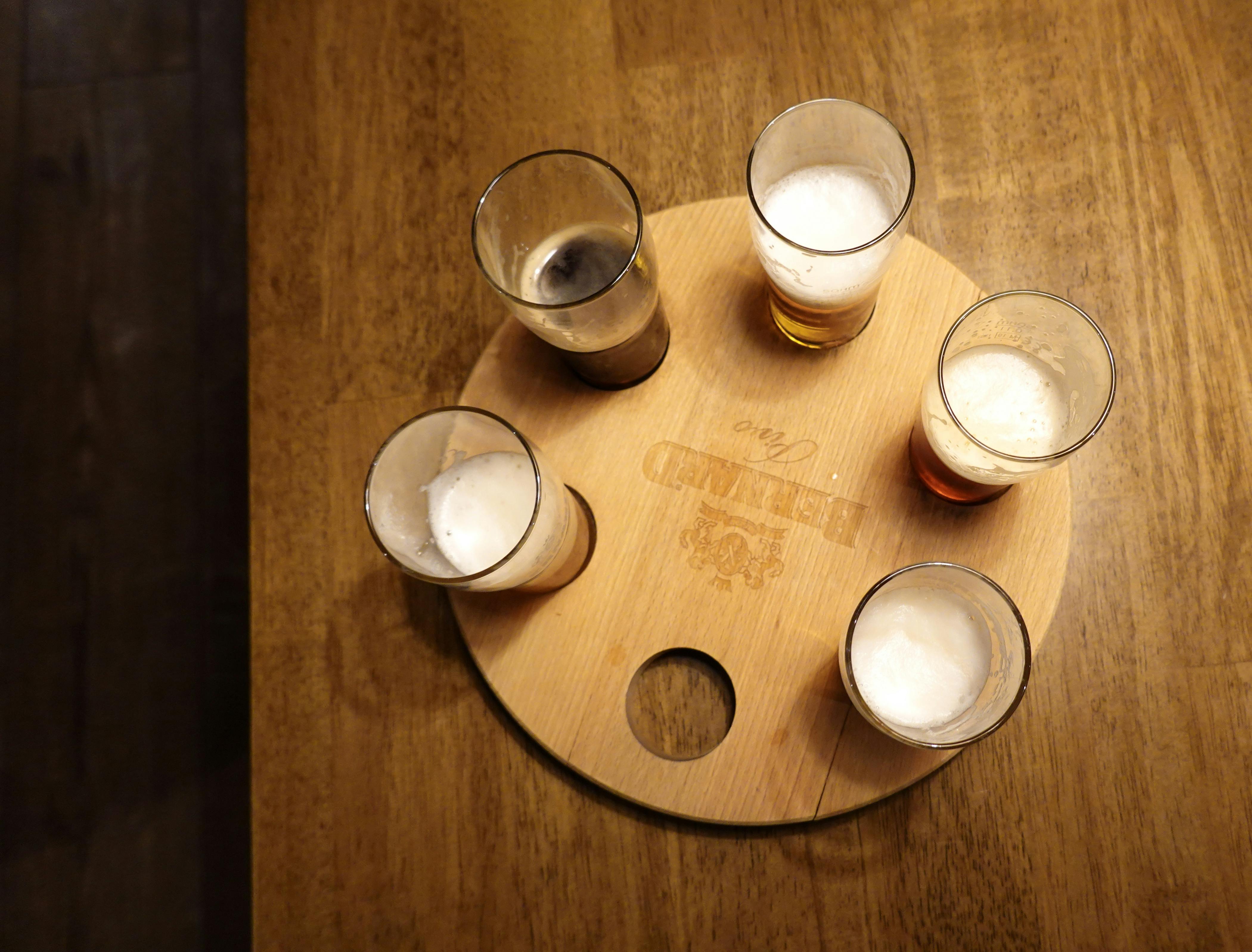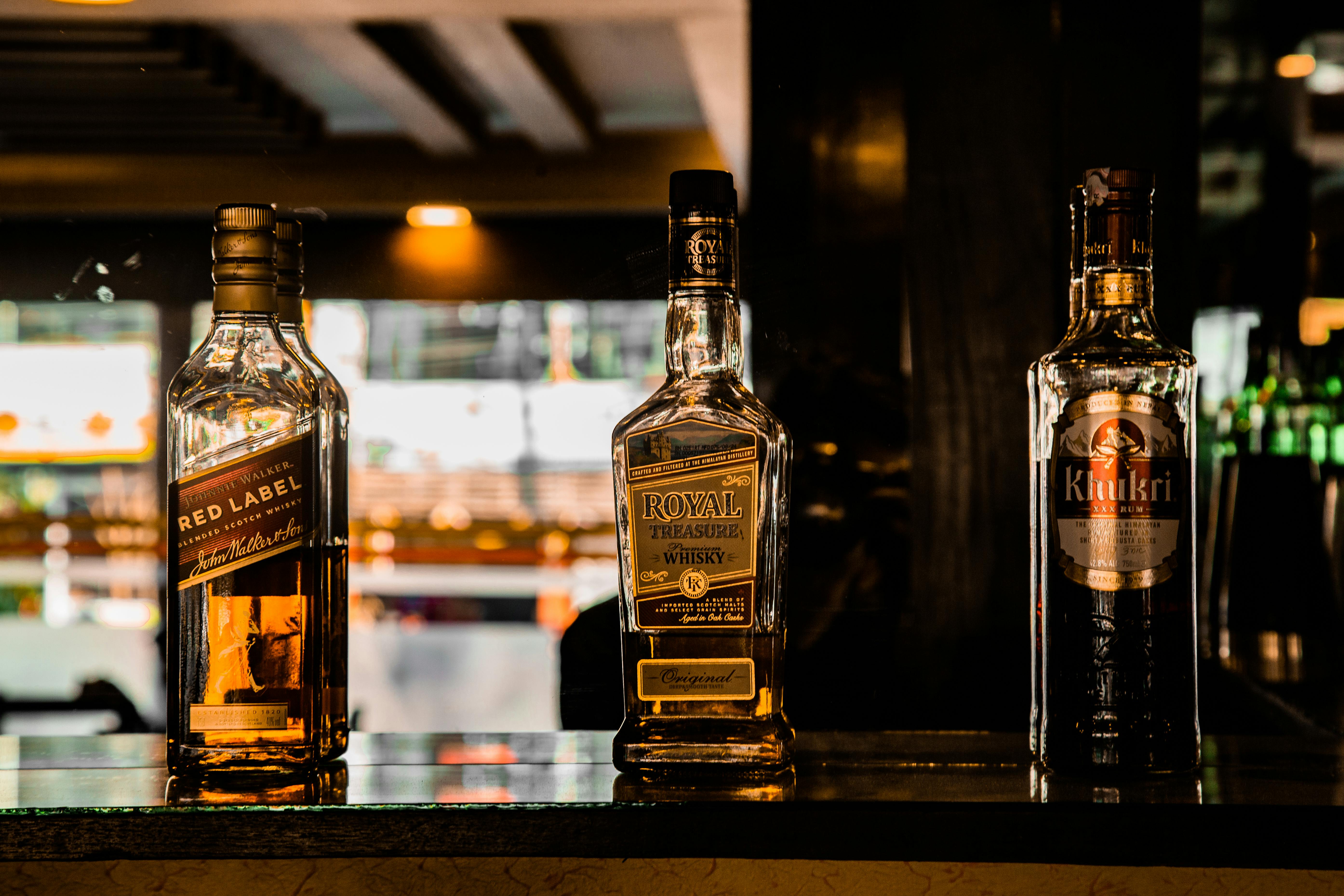Alcohol distillation is the process of separating a liquid mixture into its component parts, known as fractions. In the case of alcoholic beverages, this process involves taking a fermented mixture—which contains ethanol, water, and other compounds—and separating it into its component parts. The resulting fractions are then blended to create the desired beverage. This process has been used by humans for centuries to produce alcoholic beverages like whiskey, brandy, vodka, and tequila. It is also used in industrial applications such as fuel production and perfume manufacture.Alcohol distillation is the process of separating alcohol from a liquid by heating it to a boiling point and then condensing the vapors to form a concentrated form of alcohol. The process can be used to create various spirits, such as vodka, gin, whiskey, and rum. Distilling can also be used to purify other liquids, such as water or essential oils.
The Process of Distilling Alcohol
Distilling alcohol is a process that involves the vaporization and condensation of ethanol to make it more concentrated. The process involves heating the fermented liquid (containing ethanol) to temperatures above 78°C, which allows the ethanol to vaporize. As the ethanol vapor rises and cools, it condenses and is collected in a separate container. This collected liquid is called distillate. The distillate contains a higher concentration of ethanol than the original fermented liquid, as other impurities remain behind in the still.
The process can be repeated several times, depending on how high of an alcohol concentration is desired. Different types of stills can be used for this process, such as pot stills or column stills, though column stills are typically used for commercial production due to their higher efficiency and larger output capacity.
To ensure product safety, distilleries are required to adhere to certain standards set by regulatory bodies such as Alcohol and Tobacco Tax and Trade Bureau (TTB). This includes ensuring that all distilled spirits meet specific requirements regarding proof, flavor, and clarity.
The distilled spirit is then usually aged in oak barrels before bottling. During this aging process, certain compounds are extracted from the wood barrels giving the spirit its distinctive color and flavor profile. This aging process also helps to mellow out any harsh flavors that may be present in younger spirits.
The final product can then be bottled and labeled according to applicable regulations before being distributed for consumption or sale.
Distilling alcohol is an important step in producing high-quality alcoholic beverages such as whiskey, vodka, rum, gin etc., as it helps concentrate the alcohol content while removing undesirable flavors caused by impurities in the fermented liquid. With proper adherence to regulatory standards and careful aging processes, distilleries can produce top-notch alcoholic beverages for consumers’ enjoyment.
Types of Distillation Equipment
Distillation is a process of separating mixtures based on differences in the boiling points of their components. Distillation equipment is used to carry out this process, and comes in a variety of types depending on the complexity, size and purpose of the distillation. The most common types of distillation equipment are fractional distillation columns, vacuum stills, percolators and pot stills.
Fractional distillation columns are large pieces of equipment used for industrial-scale applications. They consist of several interconnected trays, each with an outlet to collect the component fractions from the mixture as they are separated. Vacuum stills are similar to fractional columns but operate at lower pressures and temperatures than regular stills, allowing them to produce higher-grade products at lower costs.
Percolators are small-scale or laboratory-scale distillers that use a constant stream of liquid over a heated surface to separate components from a mixture. Pot stills are another type of small-scale distiller, but unlike percolators they do not use any external stream; instead, they rely on vaporization and condensation cycles within their vessels to separate components from a mixture.
Finally, steam distillers use steam rather than liquid as the carrier medium for separating components from a mixture; these are also typically used for small-scale operations or in laboratories where precise control over temperature is required. All these types of distillation equipment can be used for different applications depending on their size, complexity and purpose.
Improved Taste
Distilling alcohol can greatly improve the taste of a beverage. By removing impurities and unwanted flavors, distillation produces a higher quality drink that has a smoother and more refined taste. Distilled alcohol is also less likely to cause adverse reactions when consumed, making it a safer option than some other forms of alcohol. Additionally, distilling alcohol can also make it more concentrated, allowing for stronger drinks with fewer ingredients.
Increased Potency
Distilling alcohol can increase its potency significantly. By removing the water content from the drink, distillation concentrates the alcohol content in the beverage and allows for a higher percentage of ethanol in each serving. Distilled alcohol is often much stronger than non-distilled equivalents, giving it greater potential to produce intoxication when consumed.
Longer Shelf Life
Distilling alcohol can extend its shelf life considerably. The process of distillation removes bacteria and other contaminants that would otherwise lead to spoilage over time. As a result, distilled alcohol can last much longer than non-distilled varieties without losing any of its flavor or potency. This makes it an ideal choice for long term storage and consumption.
Cost Savings
Distilling alcohol can also help to save money on consumables. Since distillation produces stronger drinks with fewer ingredients required, it eliminates the need to purchase additional bottles or mixers in order to achieve the desired level of potency and flavor. This can significantly reduce costs associated with purchasing alcoholic beverages over time.
The Different Types of Alcohols Produced Through Distillation
Distillation is a process that is used to produce alcoholic beverages from a fermented liquid such as beer, wine, or cider. In this process, the liquid is heated to a much higher temperature than it would normally be at and then cooled again in order to separate the alcohol from the other components of the liquid. This process of distillation produces different types of alcohols which vary in strength and flavour.
The most common type of alcohol produced through distillation is ethanol, which is found in all alcoholic beverages. It has a very low boiling point and so it is relatively easy to separate it from other components during the distillation process. Ethanol has a mild flavour and can be used to produce a wide variety of alcoholic beverages such as beer, wine, spirits, liqueurs and fortified wines.
Methanol or wood alcohol is another type of alcohol produced during distillation but it is much less common than ethanol. It has a higher boiling point than ethanol and so it takes more energy to separate it out during distillation. Methanol also has a strong odour and can be toxic if consumed in large quantities so it must be removed before any alcoholic beverage can be consumed safely.
Higher alcohols are another type of alcohol that can be produced through distillation and these include propanol, butanol and amyl alcohols. These types of alcohol have higher boiling points than ethanol so more energy must be used to separate them out during the distillation process. They are often used as flavourings or aroma compounds in certain types of alcoholic beverages such as whisky or brandy.
Finally, fusel oils are also produced through distillation and these are actually mixtures of different kinds of higher alcohols that have been boiled off together during the process. Fusel oils have very strong flavours and aromas so they must be removed before an alcoholic beverage can be drunk safely.
In summary, there are several different types of alcohol which can be produced through distillation including ethanol, methanol, higher alcohols and fusel oils. Each one has its own unique properties that make them suitable for use in different types of alcoholic beverages depending on their desired flavour profile or strength level.

Different Grades of Alcohols and Their Uses
Alcohol is a popular type of beverage that has been consumed since ancient times. There are different grades of alcohol, with each grade having its own unique uses. The most common types of alcohol are beer, wine, and spirits. Beer is the most popular type of alcoholic beverage, and it is typically made by fermenting grains such as barley or wheat. Wine is made by fermenting grapes and other fruits, while spirits are distilled versions of beer or wine that have a higher alcohol content. Different grades of alcohol have different uses, so it’s important to know what type is best suited for the purpose you need it for.
Light beers are typically lower in alcohol content than regular beers, so they are often used as a lighter alternative to regular beers. These light beers have fewer calories than regular beers, so they can be a good choice for those who want to cut back on their drinking without sacrificing taste. Wine comes in both red and white varieties, with red wines possessing more tannins than white wines. Red wines are usually served with heavier meals such as steak or lamb, while white wines tend to pair better with lighter fare such as fish or salads.
Spirits are distilled versions of beer or wine that have a higher alcohol content. Spirits such as whiskey, gin, vodka, and rum can be used for various purposes such as cocktails or shots. Whiskey and gin can be enjoyed on the rocks or mixed into cocktails like Old Fashioneds or Manhattans. Vodka is often used in mixed drinks like martinis or cosmopolitans while rum can be used to make daiquiris and other tropical drinks.
The different grades of alcohol all have their own unique uses and flavors that can be enjoyed in different ways. Whether you’re looking for a light beer to enjoy on its own or an aged spirit for a special occasion cocktail, there’s an alcoholic beverage out there that fits your needs perfectly!
Health and Safety Considerations When Distilling Alcohol
Distilling alcohol has become a popular hobby in recent years, but it is important to take health and safety precautions when doing so. Before engaging in any distillation process, it is important to understand the risks associated with the activity. Distillation involves working with potentially flammable materials and equipment, so it is important to take all necessary safety precautions. It is also important to be aware of the potential health risks associated with ingesting or coming into contact with certain types of alcohol.
When distilling alcohol, it is important to ensure that all equipment and materials used are in good condition and free from any defects that could cause a fire or explosion. All containers used should also be made from fireproof materials and kept away from sources of heat or open flames. Proper ventilation should also be ensured to reduce the risk of inhalation of toxic fumes or vapors generated during the distillation process.
In addition to safety precautions, it is important to consider the health risks associated with consuming alcohol that has been distilled at home. Ingesting certain types of alcohol can lead to serious health problems such as liver damage, nervous system damage, heart problems, and even death in some cases. Therefore, it is essential that all distilled alcohol be consumed responsibly and not used for purposes other than intended.
Finally, when distilling alcohol it is important to ensure that all laws and regulations related to distillation are followed. In some areas, producing certain types of alcoholic beverages may be illegal or require a special license or permit from a governing body before production can begin. Therefore, before engaging in any type of distillation process it is always best to check local laws first.
By following proper safety protocols and understanding the potential health risks associated with consuming alcohol that has been distilled at home, individuals can engage in this hobby safely and responsibly while enjoying its many benefits.
Home Brewing and Distilling Alcohol Rules and Regulations
Brewing or distilling alcohol at home is a popular hobby, but it’s important to understand the rules and regulations that apply before you get started. In many countries, there are laws governing the production of alcohol, and it’s important to be aware of these laws before you begin brewing or distilling at home. Depending on where you live, there may also be restrictions on the amount of alcohol that can be brewed or distilled in a given area.
It is important to check with your local government to determine the exact regulations that apply to your particular situation. Some countries will allow for limited amounts of brewing or distillation for personal use only, while others have more strict laws that require a license for any type of commercial activity involving alcohol production. Additionally, some areas may require special permits or licenses in order to sell any type of alcoholic beverage.
In addition to checking with your local government regarding applicable regulations, it is also important to understand the safety considerations involved when producing alcohol at home. It is important to take proper precautions when brewing or distilling alcohol as it can be highly flammable and potentially dangerous if not handled properly. Additionally, when making larger batches of alcohol, it is important to ensure that all equipment used is up-to-date and safe for use.
Finally, always remember to store any finished products in an appropriate container and ensure that they are labeled correctly according to applicable laws. Home brewing and distilling alcohol can be fun and rewarding hobbies but make sure you understand the rules and regulations beforehand so you can stay safe and legal!

Conclusion
Alcohol distillation is an effective way to produce and concentrate alcohol from fermented beverages. By boiling and condensing the beverage, a higher alcohol content can be achieved through multiple distillations. Distillation has been used for thousands of years, but it is still an important process for producing many alcoholic beverages today. Distillation is also used for a variety of other applications such as producing essential oils, producing fuel, and producing industrial solvents. Although distillation requires some specialized equipment, it is relatively simple to learn and can be done at home with the right materials.
In conclusion, alcohol distillation is an ancient process that continues to play an important role in the production of alcoholic beverages today. By boiling and condensing fermented drinks, distillers are able to create higher proof spirits or concentrate flavors in various beverages. With the right equipment and knowledge, distillation can be done safely at home as well as on a professional scale.

